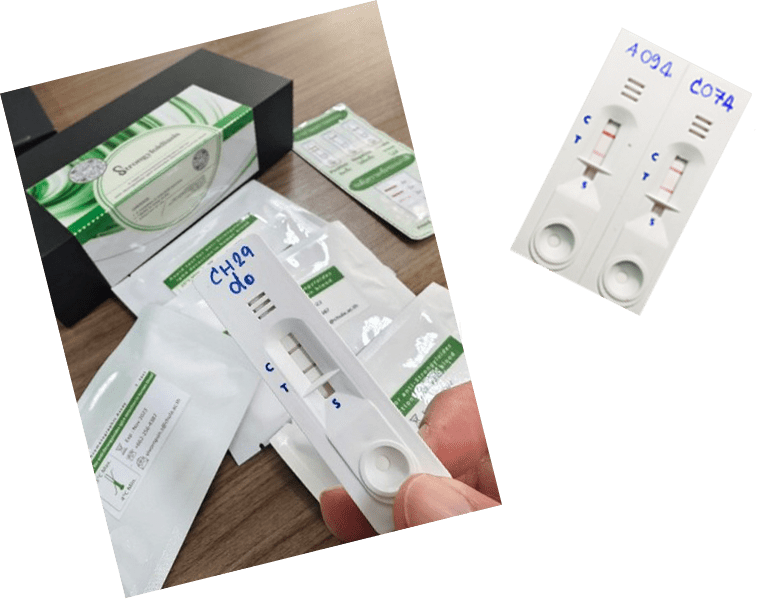
DEPARTMENT OF PARASITOLOGY FACULTY OF MEDICINE CHULALONGKORN UNIVERSITY
Innovation: “Rapid Test Kit for the Diagnosis of Strongyloidiasis”
About the Disease
Strongyloidiasis is an intestinal parasitic infection caused by Strongyloides stercoralis, a nematode that infects humans when its larvae penetrate the skin. In immunocompetent individuals, the infection often presents with mild or non-specific symptoms, leading to misdiagnosis or undetected infection. Consequently, the parasite can persist within the host for years and be transmitted to others. Chronic infection may later result in severe symptoms. In immunocompromised patients, the disease can progress to hyperinfection syndrome, which is potentially fatal, and may develop into disseminated strongyloidiasis, where larvae spread to multiple organs such as the lungs and brain. Larval migration through the intestinal wall can also introduce gut bacteria into the bloodstream, leading to sepsis and death within 2–3 days, with a mortality rate as high as 70–90%.
Addressing the Diagnostic Challenge
The conventional diagnosis of strongyloidiasis relies on detecting larvae in stool samples, which has low sensitivity because larvae are excreted inconsistently and in small numbers. Identification requires trained personnel and microscopy. Although agar plate culture improves detection sensitivity, it demands specialized equipment and poses infection risks to laboratory staff, with results taking 3–7 days — delaying treatment and increasing mortality risk.
Molecular methods, while sensitive, are not widely adopted due to their complexity, high cost, and susceptibility to PCR inhibition from contaminants in stool samples.
Immunodiagnostic approaches, such as ELISA detection of parasite-specific antibodies, offer high sensitivity and specificity. However, ELISA procedures are complex, time-consuming, and expensive, requiring specialized reagents, instruments, and expertise.
Innovation Highlights
The developed Latex Particle Agglutination (LPA) test detects Strongyloides-specific antibodies in patient serum. It is a simple, rapid, and inexpensive diagnostic method requiring only a small blood sample. Results can be visually interpreted within 5–20 minutes without instruments or skilled personnel. Latex particles are durable, available in various colors, and require less antigen than gelatin-based particles, reducing test cost and complexity.
Applications and Benefits
This diagnostic test can be applied in field studies, community clinics, and small hospitals in remote areas where access to laboratory facilities is limited.
Current Development Status
Preliminary laboratory evaluations using serum samples from confirmed cases of strongyloidiasis showed 100% diagnostic sensitivity and 79.7% specificity. This research was awarded the Graduate Innovation Award by the Graduate Affairs Division, Faculty of Medicine, Chulalongkorn University.
The department has further developed the test into a Lateral Flow Test Strip format to enhance convenience, sensitivity, and specificity. Evaluation results demonstrated 82.93% sensitivity and 98.78% specificity in detecting Strongyloides-specific IgG4 antibodies in patient serum. Moreover, the test can be used for post-treatment monitoring, yielding negative results within one month after therapy.
This innovative diagnostic kit provides a low-cost, highly sensitive, and specific tool for diagnosing strongyloidiasis. It is simple, rapid (results within 15 minutes), and requires only a small amount of blood without specialized instruments or personnel. Hence, it is suitable for use in fieldwork and small healthcare settings, ensuring equitable access to diagnosis and treatment for all patients.

